
Rostand Medeiros – https://pt.wikipedia.org/wiki/Rostand_Medeiros
Francisco Inácio was a middle-aged man who was well-known in the São Paulo do Potengi city region for being a dedicated and hardworking individual [1]. Known by as Chico Inácio, he was the owner of a tiny rural farm in the northeastern Brazilian state of Rio Grande do Norte. Fazendinha was the name of his land, which spanned just 50 hectares. This tiny plot of land lay next to the small hamlet of Lagoa dos Paus and bordered the vast and influential estate known as Lagoa Nova, which belonged to Juvenal Lamartine de Faria, the previous governor of Rio Grande do Norte. Lagoa Nova was a property spanning over 11,000 hectares.

This little rural producer was going about his farm on Wednesday, May 10, 1944, going about his daily business of producing cattle and living off the land. Dressed in the typical leather costume of northeastern Brazilian cowboys, he rode his little horse around the meadow in search of straggling cattle. Because of the abundant rain that was falling on the area at the time—a genuine gift from heaven—he completed his assignment with a great sense of satisfaction and delight. A remarkable abundance following two years of extreme drought that destroyed the land and caused starvation in both humans and animals[2].
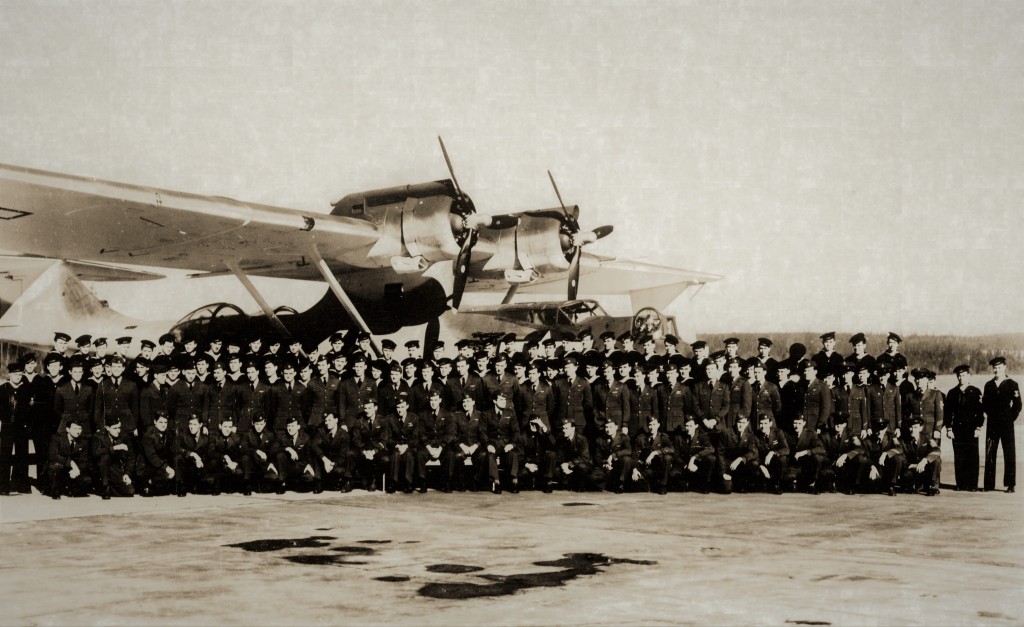
It was about two in the afternoon, and the sky was overcast and chilly. Without a doubt, the rancher believed that fresh rains would fall at night and that lightning would strike the sky. At that moment, he noticed a plane and heard the sound of engines. But, Mr. Chico Inácio noticed that the flying machine appeared to be having issues because it was leaking smoke and its engines were making an odd noise. This was in contrast to other airplanes that he had seen soaring through the skies there. Before long, he spotted the machine moving toward the earth.

The aircraft made a powerful impact on the earth at a location on Dr. Juvenal’s property that was not far from him. The cowboy stunned when a massive fireball and high-altitude black smoke emerged, designating the impact site. Chico Inácio gave his horse a quick spurt and rode off toward the tragedy site.
Chico Inácio witnessed something that would undoubtedly remain etched in his memory for the rest of his life, as others who knew him well recall his comprehensive description of the heartbreaking scene. A large hole had been made in the ground by the aerial equipment. All around him was utterly blackened and scorched. Travel bags had been opened by the impact, leaving bits of twisted metal and garments all over the place. The worst part, though, was not just the overpowering stench of charred flesh but also the occasional appearance of chunks of maimed and burned human remains.
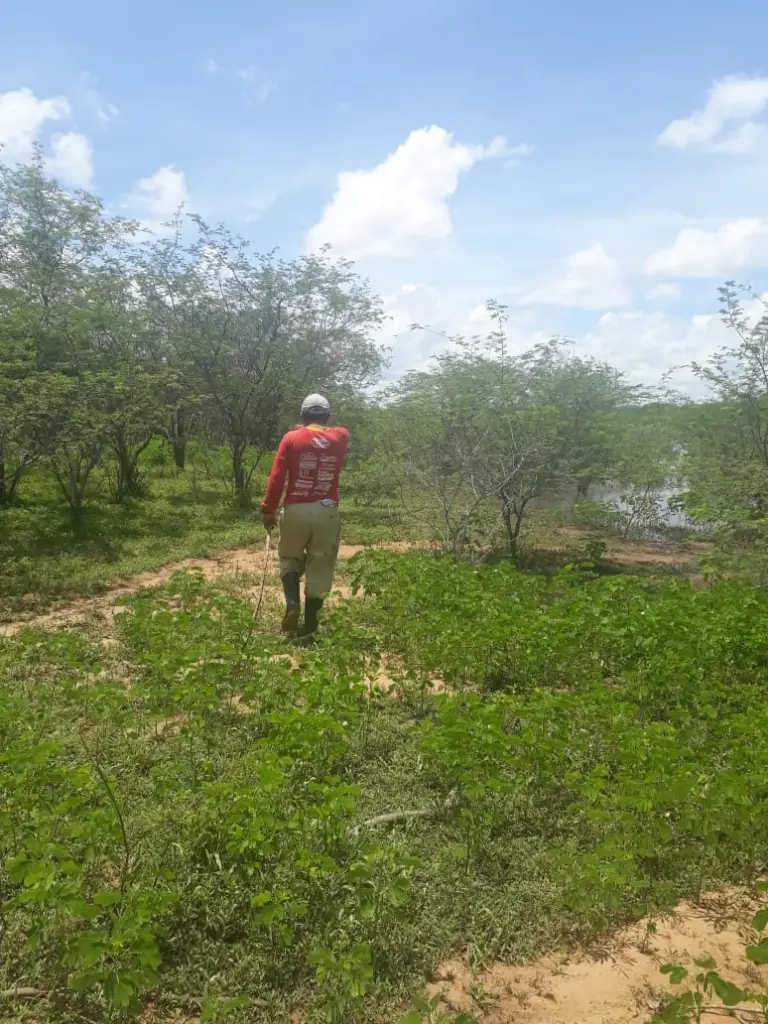
One tree had a headless person hanging from it, another just had the upper portion of the trunk exposed, and a leg was visible in a corner of still another. Sad to see. It’s possible that Chico Inácio secretly questioned the origin of that machine and the identity of those unfortunate God’s children who met their demise in such a horrible and brutal manner.
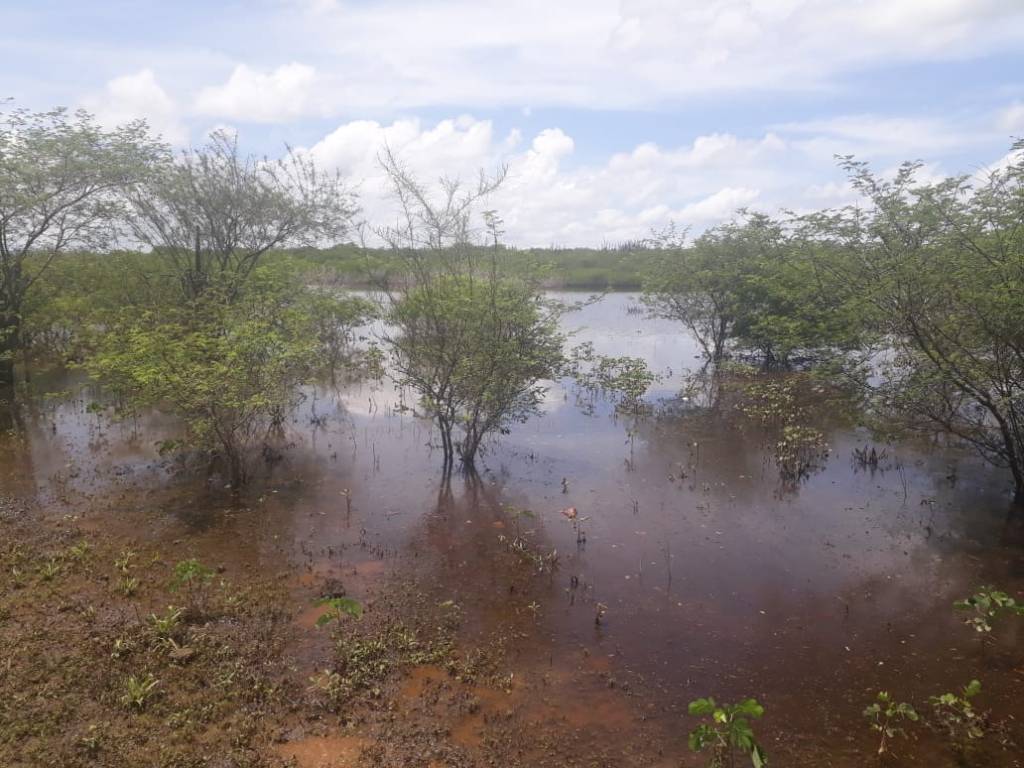
From the Arctic to Belém
In order to respond to this issue, it is important to keep in mind that the Japanese started launching coordinated strikes throughout a large portion of Asia and the Pacific Ocean nearly three years prior, on December 7, 1941, following their attack on the Hawaiian Islands.
They quickly came to rule over Singapore, Malaysia, Hong Kong, the Philippines, Burma (now Myanmar), and other places. The Japanese gained a number of successes between December 1941 and June 1942, and they continued to lead the conflict until the pivotal air-naval combat of Midway. Japan suffered a significant loss in this battle, which took place between June 4 and June 7, as the US Navy sank four aircraft carriers.
However, the deployment of a Japanese naval force to the Aleutian Islands, Alaska, on June 3, is a little-known detail connected to this conflict.

As the tops of a submerged volcanic mountain range, these icy, treeless islands rise from the Pacific Ocean like stony points in a gray universe, constituting a vast and strategically important archipelago that is a genuine extension of Alaska’s frozen territory into the Pacific. The Japanese invasion of this icy location was an attempt to split the US Pacific Fleet and draw in the American armed troops gathered around Midway Island. The islands of Attu and Kiska were taken by the Japanese, who also blasted the Dutch Harbour base and launched an offensive on the Aleutians. Nevertheless, the intended outcome of this Japanese diversionary tactic was not achieved.
On May 11, 1943, a mere eleven months later, US military personnel initiated an endeavor to retake Attu. The US Navy’s VP-45 aviation squadron was one of the forces supporting this assault. This was a combat force made up of six Consolidated PBY-5 Catalina seaplanes that had been constructed months earlier. After Attu was fully recaptured, VP-45 continued to operate in the area, mostly conducting maritime patrols, and acquired six additional PBY-5s straight from the Consolidated factory.
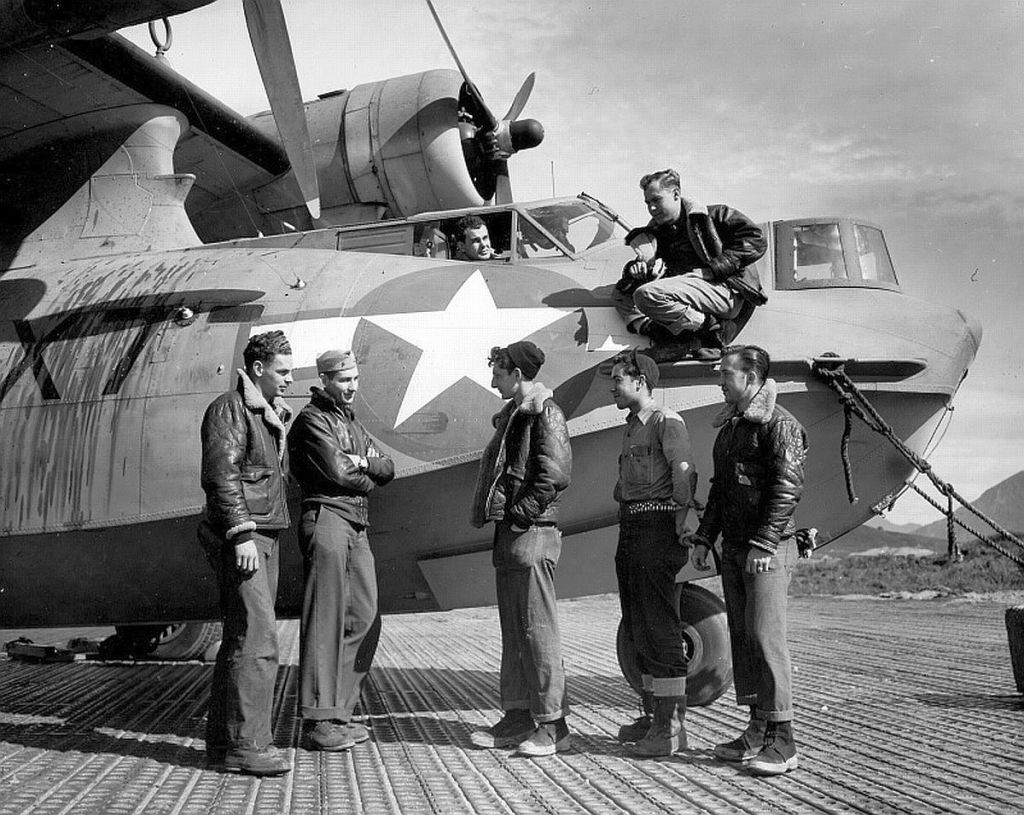
Four Catalinas from this squadron departed Attu on July 10, 1943, and flew towards Japan. They conducted a night bombing raid on Paramushiru Island, the second largest island in the Kuril Islands archipelago, which is currently occupied by the Russians and lies north of Japanese metropolitan territory. According to some researchers in North America, this would make VP-45 the first US Navy squadron to strike Japanese island territory directly. However, there are questions about this mission because the bombs were dropped using radar at night, in overcast weather, and with unclear outcomes.
Shortly after New Year 1944, more precisely on 3 January, the squadron welcomed Captain Calder Atkinson as its new commander. He was a 29-year-old young man, born in the city of Wilmington, in the state of North Carolina, who studied at New Hanover High School and graduated in mechanical engineering in 1936 at the University of North Carolina (UNC), located in Chapel Hill.
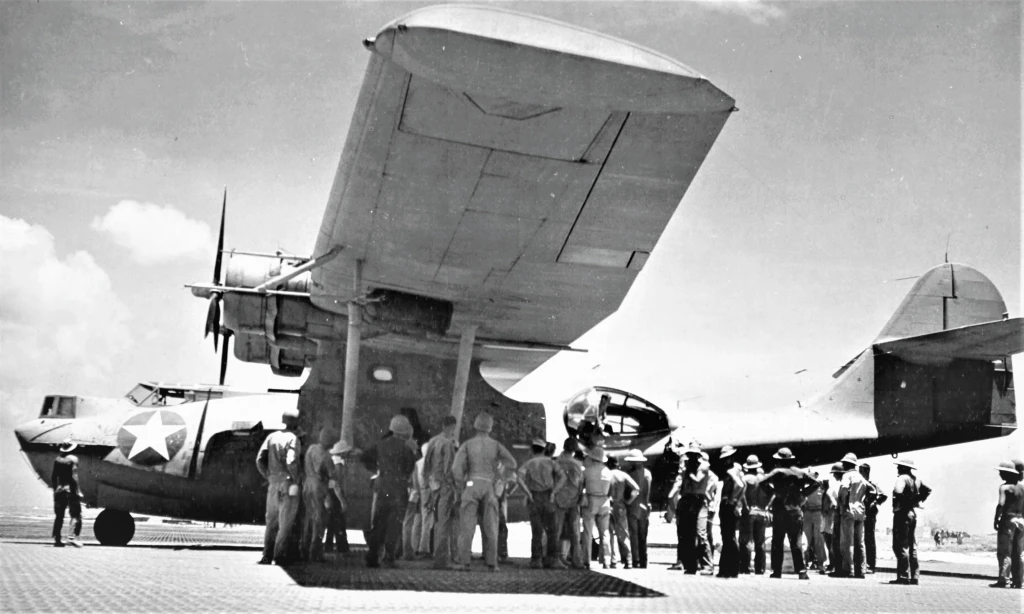
Then, in March 1944, Commander Atkinson was given orders to depart the frigid Attu Island with his seaplanes and men, bound for the United States. After receiving a dozen brand-new PBY-5A Catalina seaplanes, they trained and flew over Florida waterways for a while. New orders announced on April 29, 1944, said that VP-45 had been moved to Belém, a hot and muggy city in the northern Brazilian state of Pará.
Nazi submarine activity in the South Atlantic and off the coast of Brazil had already decreased significantly at that point. The so-called “Happy Days” were over, when Allied freighters’ routes were beset by horror, death, and destruction as a result of the truly determined and daring combat efforts of German and Italian submersible crews. However, the US troops still had a job to complete and the conflict was still ongoing. Commander Atkinson sent the Catalinas of VP-45 to forward detachments in the Amapá region and the city of São Luiz, in the state of Maranhão, in addition to Belem, to better cover his anti-submarine patrol area. Under the direction of Fleet Air Wing 16 (FAW-16), an American military unit based in the city of Recife, state of Pernambuco, Atkinson carried out VP-52 air missions in northern Brazil. FAW-16 air operations were part of the U.S. Navy’s Fourth Fleet, which had jurisdiction over the South Atlantic and was under the command of Admiral Jonas Howard Ingram. Its main combat mission was to safeguard commerce and maritime traffic and the American military worked in partnership with the Brazilian military.

On May 10, at seven in the morning, eleven days after coming to Brazil, we will find Commander Calder Atkinson sitting in the cockpit of a PBY-5A, getting ready to take off from the Val de Cans airfield, headed toward Recife. Atkinson and his group had to report to FAW-16 commander Rossmore D. Lyon and acquire supplies to keep his squadron operating at optimal efficiency. Along with Commander Atkinson, there were nine other military officials on board, including two officers from the Marine Corps. It was merely an administrative flight. It appears that Lieutenant John Weaver Shoyer, a former insurance business executive from Wynnewood, Philadelphia, who enlisted in June 1942, served as his co-pilot.

The aircraft continued to Fortaleza, capital of Ceará, without major interruptions after taking off as scheduled. Their last contact was made around one o’clock in the afternoon, at a location 10 miles west of that city. The pilot stated that at that time there was a lot of rain, a lot of clouds and constant winds.
Then the flying boat of Commander Calder Atkinson vanished.

Three VP-45 Catalina, led by captains R. A. Evans, R. F. Watts, and J. D. Logan, took out from Belém early the other day and started aerial searches while according to the same flight plan that commander Atkinson had previously established. It flew daily, but the outcome was unfavorable. US Army Air Force aircraft took part in the search, but the outcome was as unsatisfactory.

The other day, the American military personnel of the VP-45 were aware that the remains of Commander Atkinson’s plane were located in a place approximately fifty miles west of the city of Natal, capital of the state of Rio Grande do Norte.
The Crew’s Bodies in Traditional Ox Cart
I got to know Ailton de Freitas Macedo in 2019 while he was the city of Riachuelo’s secretary of administration. Riachuelo is a small rural town located 45 miles west of Natal. With his assistance, I was able to learn about the locations surrounding this history and meet the people who look after his community’s memories. I met Mr. José Lourenço Filho, a former cowboy who was about ninety years old and never forgot what happened on May 10, 1944, in the afternoon. He was in the Lagoa Nova farm’s main house with his father.
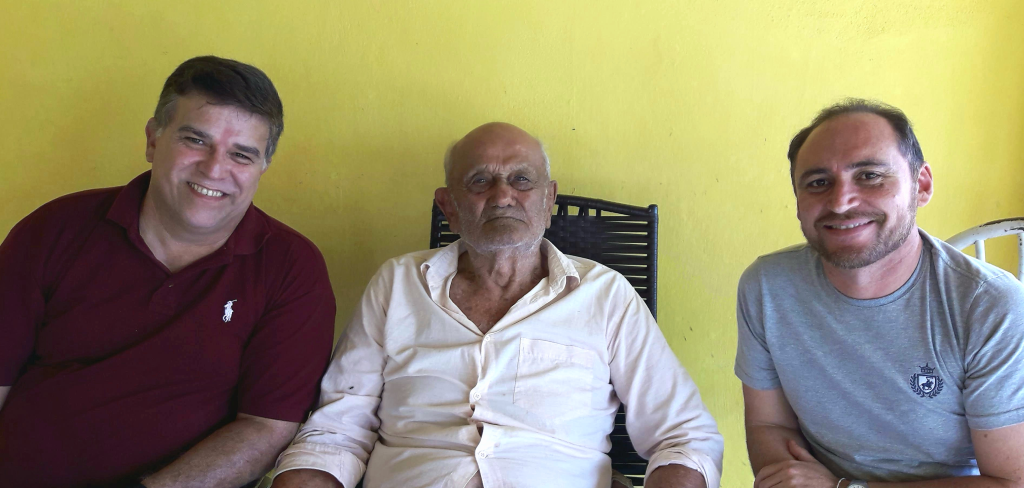
José Lourenço, as everyone knows him in the city of Riachuelo, he told me, very movingly, of the Catalina’s devastation on the Lagoa Nova farm, where his father, José Lourenço da Silva, worked as a loyal laborer for the owner, Juvenal Lamartine. It was your father who built the massive water dam that still stands there as well as the once grand main house on the property.
The once sumptuous Lagoa Nova farm had belonged to the doctor and former state representative José Calistrato Carrilho de Vasconcelos, as well as the neighboring property, called Quintururé. The two farms were purchased by Juvenal Lamartine after Dr. Calistrato passed away on October 22, 1930. He combined them under the name Lagoa Nova and made it one of the biggest estates in Rio Grande do Norte. Apart from its alleged 11,001 hectares, the Lagoa Nova farm featured six ponds, eighteen brick cottages, thirty-four mud houses, a two-story residence with a 24-meter pool, and rural laborers and their families. The locals worked with cattle and mostly processed cotton in a facility that included an 80 HP engine and a boiler. There was also a house where cassava flour was made[3].

José Lourenço, who was fifteen years old on the day of the disaster, heard the sound of engines and glanced up at the sky, seeing what appeared to be a plane flying toward Natal. Although it was unusual for planes to fly over his area, the young guy quickly had the suspicion that this gadget was only likely to be utilized in naval battles. José Lourenço was unaware of the exact causes of the conflict, but he was aware that Brazil was up against the Nazis of under Adolf Hitler because they had sunk multiple Brazilian ships and killed numerous people. He was also aware that the Americans, who were the Brazilians’ friends, were investing a lot of money in the establishment of a sizable air base in Natal named Parnamirim Field. He even knew individuals who had worked on these structures, particularly in the aftermath of the 1942–1943 drought.
That’s when he saw the plane suddenly start to fall. Then he and everyone at the Lagoa Nova headquarters heard a muffled, distant noise, and then a black cloud rose on the horizon toward the small rural community of Riacho dos Paus. Young Lourenço and other people who were there were excited to go see where the accident occurred, but his father forbade them to go there. Obediently, José Lourenço carried out the order. When his father arrived on the scene, he was heartbroken to see that the bodies had been burned and torn apart[4].
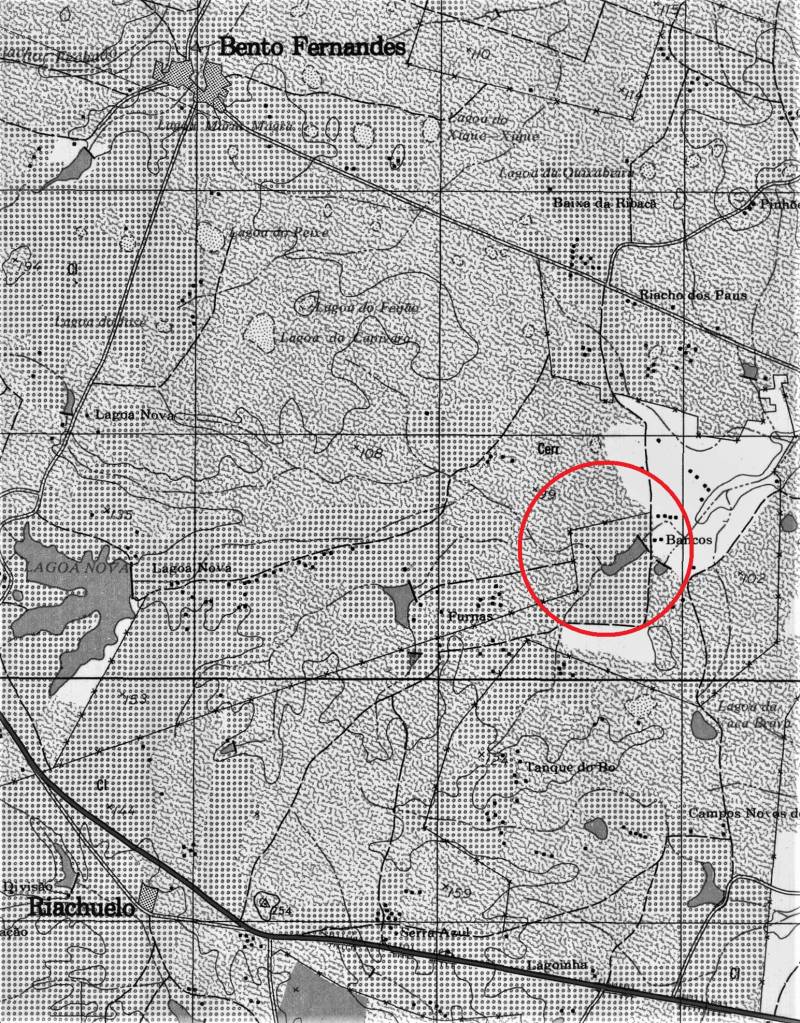
In May 1944, the largest town near the site of the disaster was the current city of Riachuelo, then a village without administrative autonomy, belonging to the city of São Gonçalo do Amarante. At that time there were around 120 families in the place and a person named Chico Bilro, who sold bread in the villages of the region, was the first to bring the news of a plane crash in the forest of the Lagoa Nova farm[5].
Many people began to appear at the scene and a cowboy named Olintho Ignácio, who worked for Dr. Juvenal and was very close to his son, Oswaldo Lamartine de Faria, took the initiative to collect the hands of the dead airmen to find out how many people who were traveling in that aircraft, which was destroyed and burned in the middle of the vegetation. It was challenging for Olintho determine the precise number of casualties there because the corpse parts had severed heads. When the cowboy first united 18 hands, everyone assumed that this was the location of the awful nine men’s deaths. Oswaldo Lamartine reportedly visited the location on horseback and was also present on the farm[6].

According to José Lourenço, the crew members were gathered and placed in an ox cart the day after the accident by Olintho and a man named Absalão, who resided on farmer Ulisses Medeiros’ Serra Azul farm. Additionally contributing to this difficult endeavor was Oswaldo Lamartine. Absalão led the animal-driven car to take the remnants of the American forces to the little cemetery at Riachuelo.
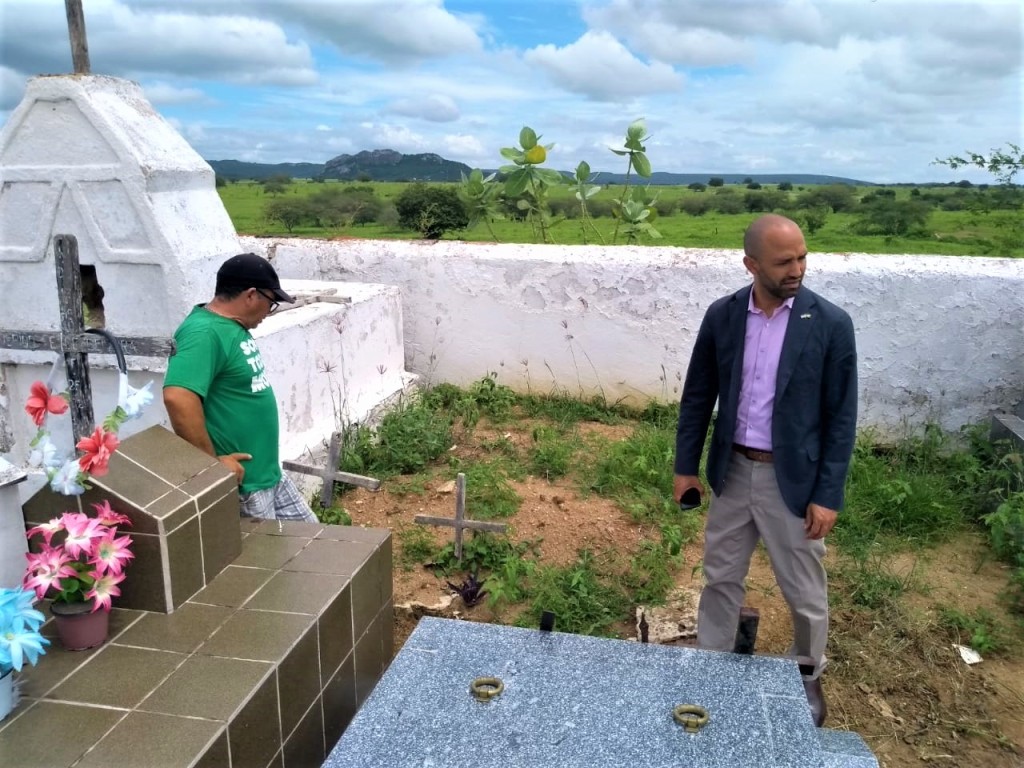
Absalão spent an entire day leading his animals along a simple path through the forest, amid the crunching of the wheels of his traditional vehicle and the smell of decomposing human bodies. The writer José Cândido Vasconcelos, author of the book História de Riachuelo (History of Riachuelo), related that in 1944 he was a child in this small town with only one street. And it was along this route that Absalom passed around eight o’clock at night with his gloomy burden, attracting everyone’s attention and leaving a record of the terrible deaths of those men. There are reports that Absalão spent the night burying the remains of the Americans in a mass grave.
Aluminum, Rings, Clothes, Dollars, and Memory
Faced with the accomplished facts and certainly amplified by the lack of knowledge generated by the illiteracy prevailing at that time and the poverty of two years of severe drought, several people began to remove from the remains of the Catalina of Squadron VP-45 all types of objects that had some utility.
José Cândido Vasconcelos, in his book, tells how even the windows—made of a material called “plexiglass”—that covered the cabin and the viewing bubbles on the sides of the plane were turned into rings worn by low-class ladies in the region. Others removed numerous military outfits from different luggage bags, and these quickly became rural people’s clothes. These garments became known as “Panos do avião”—Airplane cloth. In this regard, José Lourenço commented that the fabrics were the same khaki color used in police uniforms in Rio Grande do Norte but made with the much better quality material. Author Cândido Vasconcelos reported that Juvenal Lamartine sent men he trusted to guard what remained of the plane, but when they arrived at the scene, there was little value to preserve.
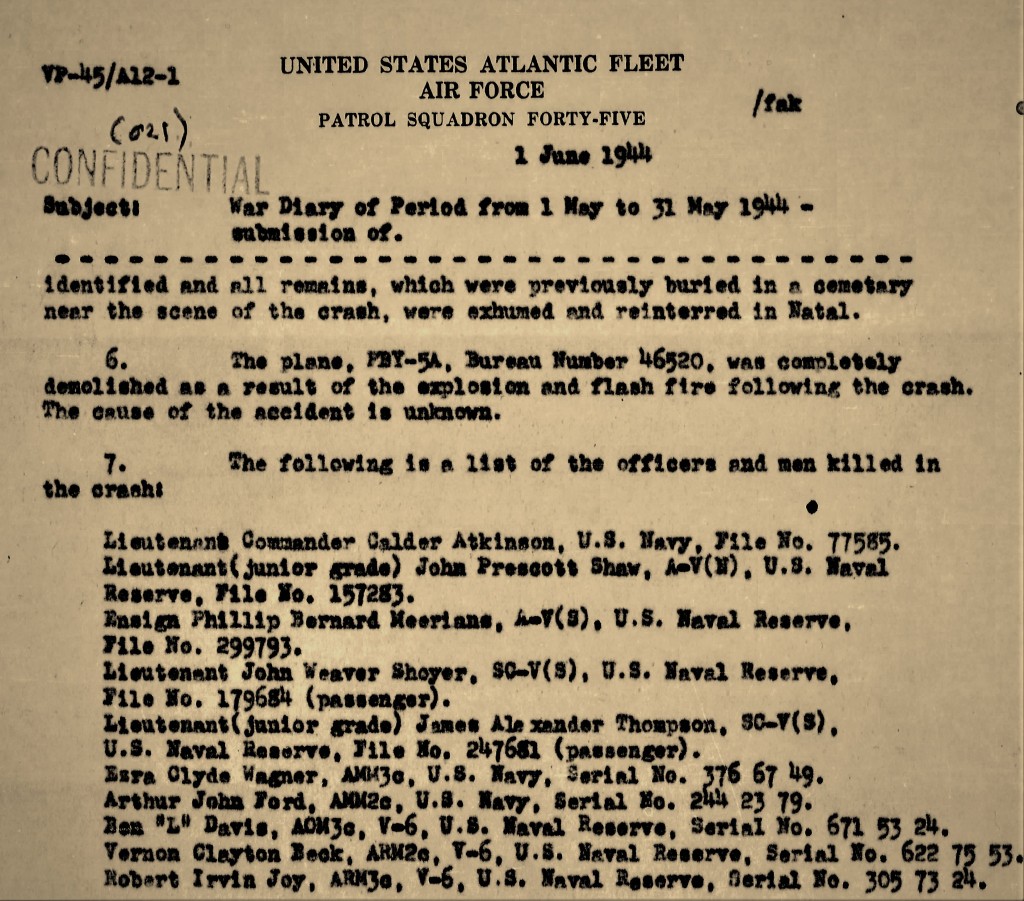
Using their expertise, local artisans produced rifle stocks known as “Bate bucha,” and knife handles plated in aluminum—materials they hardly had access to at the time. According to Mr. José Lourenço Filho, his father made multiple load worksheets out of Catalina’s metal, which proved to be quite helpful. Our interviewee recalled that donkeys were crucial in the building of dams at that period, when many of these animals were employed, prior to the widespread usage of earthmoving machines. The way it worked was that the donkey owners would ride their animals to the dam wall after gathering items from the surrounding area, including sand, clay, or stones. After unloading the cargo, they received tokens for each trip they made, which they could exchange for money at the conclusion of the workday. “Airplane Plugs” became the nickname for the aluminum plugs[7].

In addition to the uniforms and other materials removed from the Catalina, oral tradition in Riachuelo contains many stories and legends about the American money recovered from the charred remains of the plane. Narratives that speak of boxes with large amounts of money, where the discoverers of this money became rich overnight and disappeared from the region without leaving a trace, Others would have found the Americans’ money and traveled to Natal to exchange it for cruises, but were deceived and left with nothing. One of those who suddenly became rich was the cowboy Chico Inácio, the first to arrive at the place. I believe that part of this story is completely unfounded, because as Commander Calder Atkinson headed with his men to the FAW-16 headquarters in Recife, if that supposed money really existed, it is easier to believe that he would be on the Catalina to return to Belém, perhaps to pay the staff. But there seems to be something real in the story of the crash of the VP-45 Catalina in the interior of Rio Grande do Norte.

Mr. Francisco de Assis Teixeira, better known as “Seu Til”, was born in 1936 and arrived in the Riachuelo region at the age of twenty, where he became aware of the events that occurred in 1944, near the village of Riacho dos Paus, through stories from many people.
He was a friend of Chico Inácio and told me that if his old friend really took the dollars supposedly found on the plane, he didn’t do anything with that money. Because he always knew him as a poor man with few resources, even though he owned a small piece of land. However, he made the observation that many of the locals in the vicinity of the Catalina tragedy mentioned a man named Zé Lajeiro, a low-class rural laborer who vanished a few days after the catastrophe and was thought to have stolen the plane’s currency.
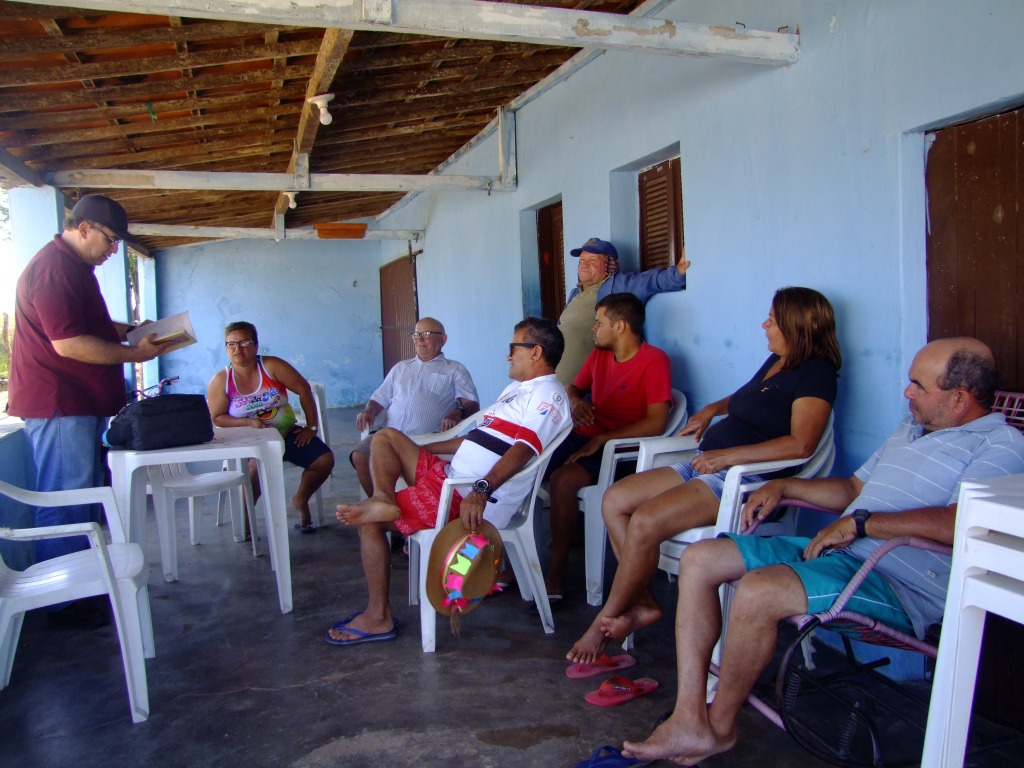
In the intriguing references I found about the case, everything pertaining to the May 10, 1944 disaster is referred to as “from the plane”. Today, the small rural community of Riacho dos Paus has no more than 40 houses, a small school, and a small chapel in the middle of its only street. There, we learned that the Consolidated PBY-5A Catalina impact site is about two kilometers southeast of the village and is known as “Plane Hole”. A few years after the disaster, a dam known as the “Plane Dam” was built.
Even among the youngest residents of Riachuelo, the story of Catalina’s fall is still spoken today, something that astounded me during the inquiry even.
A “Dog Tag” is discovered.
In his book, José Cândido Vasconcelos mentions that two months after the catastrophe, on a Sunday morning, two military vehicles carrying many personnel pulled into the tiny village of Riachuelo. They all went to the political leader of the town, Mr. João Basílio, at his home. There, the strangers asked him for help in indicating someone who could remove the bodies of the Americans to be transported to Natal and buried in the traditional and old Alecrim Cemetery, the place where all the American soldiers who died in Rio Grande do Norte. Severino Grande and Antônio Sabino were brought in for the challenging assignment; Severino’s friend Don Francisco de Assis Teixeira confirmed to me that they completed the work and were paid well.

By comparing this data with the original records created at the time by the US Navy’s VP-52 crew, we are able to determine that Lieutenant R. A. Evans was present in Riachuelo. Undoubtedly, it was he who gave the gravediggers their money, and Oswaldo Lamartine asserts that this officer had to have visited the accident site. Evans gave the order to explode the two engines of the Catalina and to burn some papers and garment pieces he had discovered. The causes of the seaplane accident were not mentioned in either the US Navy papers or by Lieutenant R. A. Evans.
As Oswaldo Lamartine tells us in the book Alpendres d’Acauã, organized by the late Ceará writer Natércia Campos, the Americans gave him scrap metal from the plane, which he sold to the merchant Joaquim Guilherme, known as Joquinha. Oswaldo Lamartine apparently made good profits with the remains of the aircraft, since he stated that with that money he was able to get married[8].
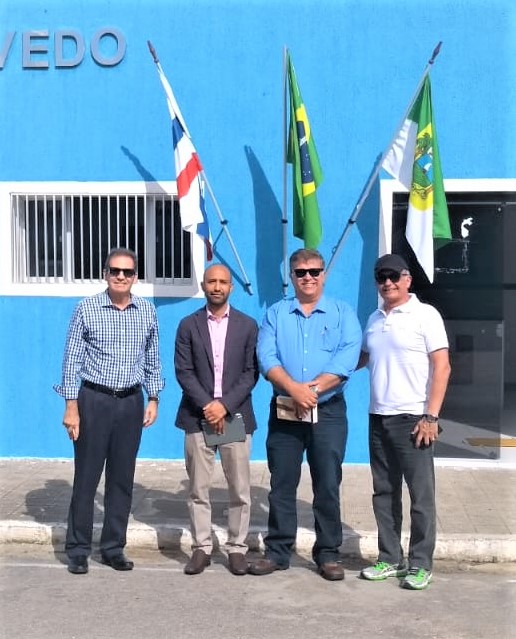
According to Oswaldo Lamartine’s story, his friend Olintho Ignácio was the one who actually discovered more information regarding this incident.
The revered cowboy is said to have met another hand a few days after the occurrence, raising the disaster’s death toll to ten. Apart from the enlarged and decayed hand, Olintho discovered a little metal plate known as a “Dog Tag,” which was utilized by the US military to identify its possessor.
Information from it was highly helpful in situations like Catalina’s accident near Riachuelo.
Oswaldo Lamartine received the discovery from the cowboy. “Calder Atkinson 77858 – BT – 1 – 25 – 43 USN” was written on the nameplate. I had the privilege of speaking with this eminent author prior to his passing, and he maintained the priceless “Dog Tag” with great care for many years.
A Get-together in the USA

Amid all of this, Commander H. B. Scott assumed administrative command of VP-45 following the Catalina crash. After changing its name to VPB-45 in October 1944, this squadron carried on with its operations in Brazil, serving at various sites until May 22, 1945, when it departed for the United States. Two more Catalinas were lost on maritime patrols during this group’s permanency in Brazil and its men failed to sink any enemy submarines in World War II.
In what is known as Operation Glory, 214 American troops’ mortal remains—including those of the ten who perished in the May 10, 1944, accident—were transferred to a special ship of the US Army that anchored in Natal on April 11, 1947. Commander Calder Atkinson is now interred in the Rock Island County National Cemetery, in Rock Island, Illinois, together with his crew.
And if it weren’t for the plaque that cowboy Olintho Ignácio found, this may have been the story’s conclusion. Over time, the tale has been forgotten in some circles, but not in Riachuelo.

Oswaldo Lamartine once said—I can’t recall if it was in an interview on a television station in Natal or through the pages of a newspaper—that the aircraft that fell on his father’s land was a legendary bomber plane, the Boeing B-17, the renowned Flying Fortress. The reason for this inaccuracy, in my opinion, was that the number of men who died in the May 10, 1944 disaster was the same as the number of men who served as the crew of the most well-known four-engine bomber in US during World War Two.
But if Oswaldo Lamartine had doubts about the events surrounding this case, they certainly dissipated in the first year of the new millennium.

A World War II researcher named Rômulo Peixoto Figueiredo, a reserve officer in the Brazilian Air Force, emailed the VP-45 veterans association on February 28, 2000. He clarified that he possessed a copy of a June 8, 1944, letter from the American commander of the Parnamirim Field, expressing gratitude to the Lagoa Nova farm residents for their assistance in providing support for the victims of the tragedy. Rômulo reported that the letter was sent by the American commander to a relative of his wife called Oswaldo Lamartine, who lived in Natal in 2000 and had in his custody one of the plates with the identification marks of Commander Calder Atkinson. Rômulo Peixoto, who died in July 2013, wanted to know if the association’s staff could provide more details about what happened[9].

The reserve officer of the Brazilian Air Force continued in contact with the association and, with Oswaldo’s consent, sent the plaque so that the members of that group could find the commander’s surviving relatives in the United States.
Oswaldo Lamartine de Faria received a certificate of appreciation from Thomas V. Golder, then president of the VP-45 veterans group, for his efforts in saving the memory of the former squadron commander.

They discovered that Commander Calder Atkinson had been married before the war, but further research revealed that his wife had also died and that there were no surviving children from this union. Everything stopped. The searches were then conducted by several military and public organizations associated with the memory of that nation’s war veterans. Finally, after six months of hard work, it was discovered that Commander Atkinson was the son of Willian Mayo and Mary Fullerton Atkinson and had a brother named Willian Mayo Atkinson Junior. It was through the descendants of his brother that members of the VP-45 veterans association discovered that Charles Caldwell, a retired U.S. Navy naval officer living in California, was Commander Atkinson’s nephew.

In Wilmington, North Carolina, his hometown, friends and relatives convened at Oakdale Cemetery on that particular day. It’s reported that because Atkinson’s family didn’t know anything about his death at the time, they assumed he had died during a covert mission or on some kind of spy trip. They learned, with some relief, that he had died while performing an administrative flight to fulfill his new command’s responsibilities. A tombstone was erected at the location to honor the pilot even in the absence of his body. Margaret Segal-Atkinson traveled from Switzerland in remembrance of her uncle, whom she had known since childhood, and a number of acquaintances who had been her peers in high school and university[10].

And this whole encounter only took place in the United States because a typical cowboy from the Northeast region of Brazil, who died of chickenpox in 1946, found and gave this identification plate to one of the wisest men of letters that Rio Grande do Rio has ever known. North. acquaintance. He, in turn, preserved the find and, at the appropriate time, delivered the historical material to a former Brazilian Air Force officer who, using modern Internet resources, sent the identification plate to the family of Commander Calder Atkinson.

THE CREW OF THE VP-45 CATALINA WHO DIED NEAR THE CITY OF RIACHUELO, RIO GRANDE DO NORTE, BRAZIL, ON MAY 10, 1944
Lieutnant Commander (LCdr) Calder Atkinson, U.S. Navy, no. 75585. Berkeley, California.
Lieutenant (jg) John Prescott Shaw, A-V (N), U.S.N. Set aside, file no. 157283. Bristol, Rhode Island.
Ensign Phillip Bernard Merriane, A-V(S), U.S.N. Set aside, file no. 299793. Kansas City, Kansas.
Lieutenant John Weaver Shoyer SC-V (S), U.S.N. Set aside, file no.179684. Devon, Pa.
Lieutenant (jg) James Alexander Thompson, SC-V(S), U.S.N. Set aside, file no.247681. Hyattsville, Maryland.
Ezra Clyde Wagner, AMM3c, U.S. Navy, Serial No. 376 67 49. Hayward, California.
Arthur John Ford, AMM2c, U.S. Navy, Serial No. 244 23 79. Chester, Pennsylvania.
Ben L. Davis, AOM3c, V-6, U.S.N. Reserve, Serial No. 671 53 24. Oklahoma City, Oklahoma.
Vernon Clayton Beck, ARM2c, V-6, U.S.N. Reserve, Serial No. 622 75 53. Napoleon, Ohio.
Robert Irvin Joy, ARM3c, V-6, U.S.N. Reserve, Serial No. 305 73 24. Beloit, Wisconsin.
NOTES
[1] Regarding the personality and personal characteristics of Mr Francisco Inácio, now deceased, they were transmitted to us by people from the region interviewed during our research to create this text in August 2018, when I was in the region.
[2] Chico Inácio probably didn’t know, but in that second week of May 1944, the rains were abundant throughout the Northeast Region of Brazil.
[3] See the newspapers A Republica, Natal – Rio Grande do Norte, Brazil, edition of October 23, 1930, p. 4, and newspaper A Ordem, Natal – Rio Grande do Norte, Brazil, edition of April 24, 1948, p. 4.
[4] In 1998, a large part of the old Lagoa Nova farm was transformed into a large site destined for Brazilian agrarian reform. I received information that that year the property would have more than 200 houses with residents.
[5] See the book História de Riachuelo, by José Cândido Vasconcelos (Author’s edition, Natal, Rio Grande do Norte, Brazil, 2008, p. 153). This interesting work has a lot of information about the 1944 episode.
[6] See the book Alpendres de Acauã: A Conversation With Oswaldo Lamartine. Pages 47 and 48. Fortaleza: Imprensa Universitária/UFC; Natal, Rio Grande do Norte, Brazil: José Augusto Foundation, 2001.
[7] According to Aílton de Freitas Macedo, Secretary of Administration at Riachuelo City Hall in 2019, a person who helped me a lot with this research, the dam called Lagoa Nova is considered the first large private water reservoir built in the state of Rio Grande do Norte.
[8] There is a discrepancy between the reports of Oswaldo Lamartine de Faria and José Cândido Vasconcelos, as the first states that the Americans were in the Riachuelo region two days after the disaster and the second two months after the accident.
[9] About Rômulo Peixoto Figueiredo’s contacts with the VP-52 veterans’ association, see the book by Douglas E. CampbellVP Navy! USN, USMC, USCG and NATS Patrol Aircraft Lost or Damaged During World War II, pages 255 and 256. Syneca Research Group Inc. Edition, 642 pages, 2018.
[10] For the 2002 Atkinson family reunion in North Carolina, see http://www.starnewsonline.com/news/20020813/a-surprise-from-the-past-gives-a-wwii-officers-friends- and-family-another-chance-to-say-goodbye
